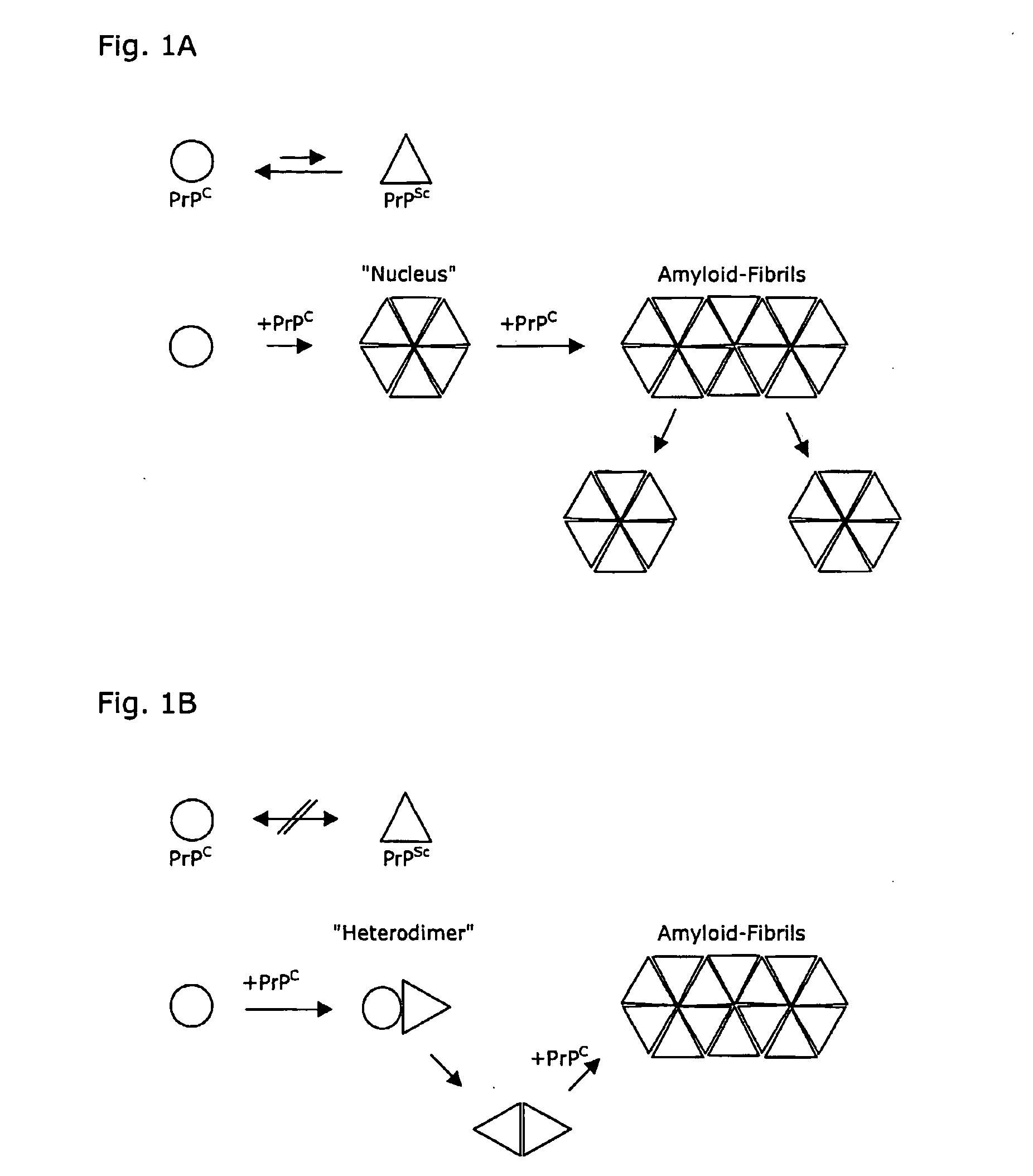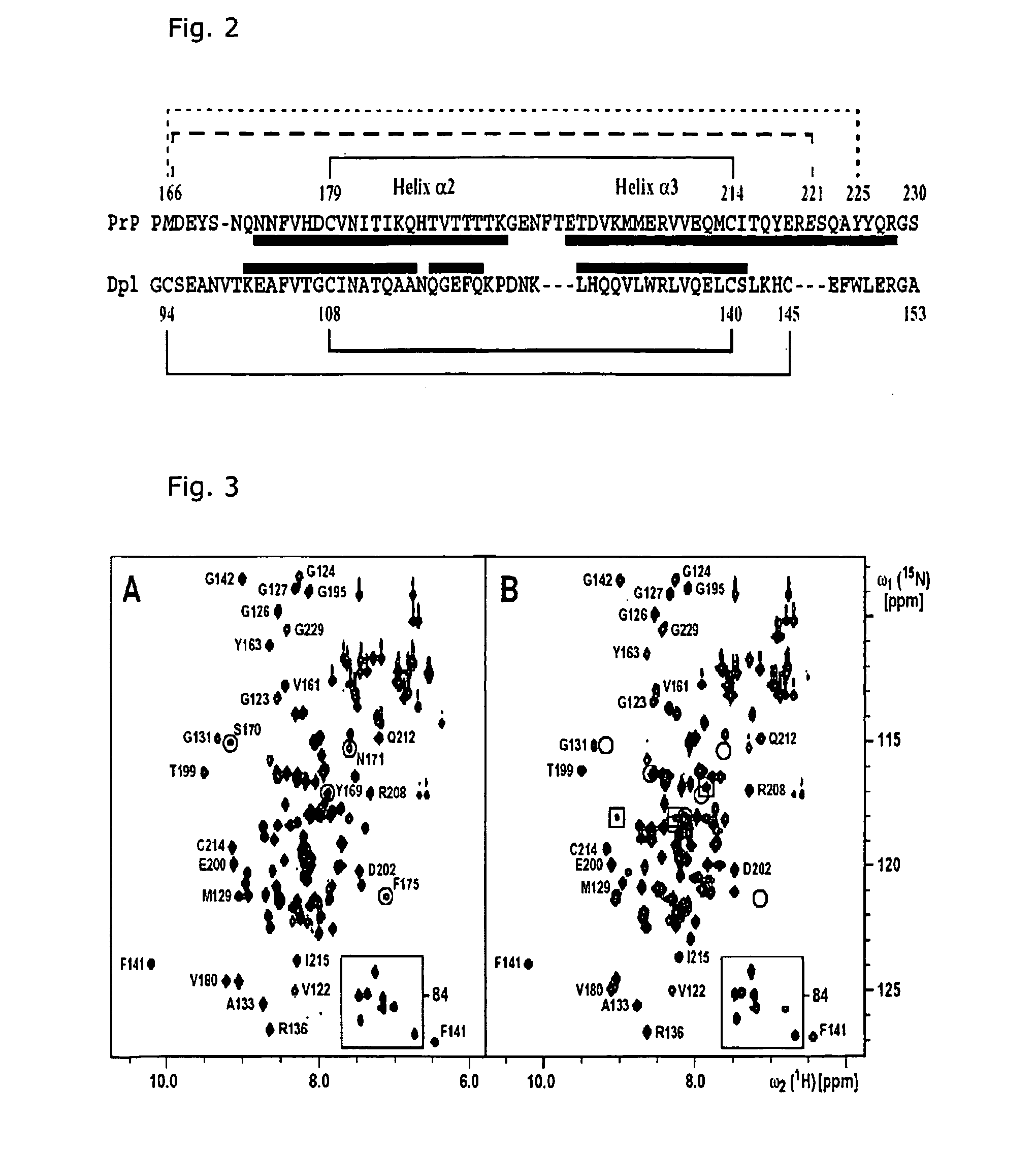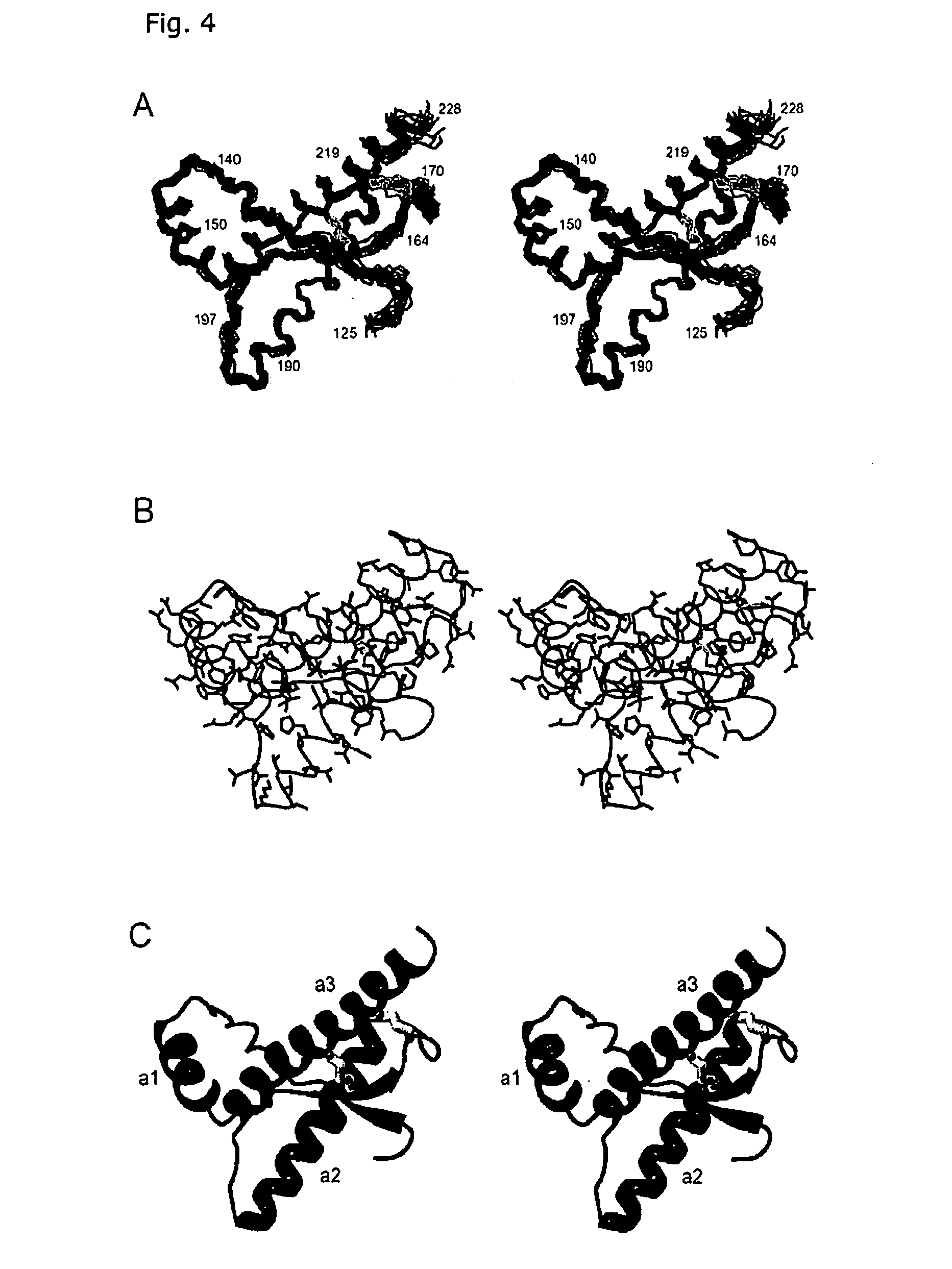Mutant proteins and use thereof for the manufacture of medicaments and the treatment of humans or animals suffering from conformational diseases
a technology of conformational diseases and mutant proteins, which is applied in the field of mutant proteins, can solve the problems of no drugs available for the treatment of prion diseases in humans and animals, and achieve the effect of inhibiting prion propagation
- Summary
- Abstract
- Description
- Claims
- Application Information
AI Technical Summary
Benefits of technology
Problems solved by technology
Method used
Image
Examples
Embodiment Construction
[0038] The three-dimensional structures of the human prion protein and the human doppel protein show a similar folding topology (Thorsten Lührs, Roland Riek, Peter Güntert und Kurt Wüthrich, submitted; Zahn et al., 2000), with a flexibly disordered N-terminal ‘tail’ attached to a 100-residue globular C-terminal domain containing three α-helices and a small anti-parallel β-sheet. A striking difference between these two proteins concerns the number of disulfide bonds. In both hPrP and hDpl, a disulfide bridge linking the helices α2 and α3 is buried within the hydrophobic core, and contributes significantly to overall stability of the globular protein structure. It has been shown that reduction of the Cys residues 179 and 214 with dithiothreitol results in unfolding and aggregation of PrP in vitro (Mehlhorn, I., Groth, D., Stöckel, J., Moffat, B., Reilly, D., Yansura, D., Willett, W. S., Baldwin, M., Fletterick, R., Cohen, F. E., Vandien, R., Henner, D. and Prusiner, S. B. (1996) High-...
PUM
| Property | Measurement | Unit |
|---|---|---|
| melting temperature | aaaaa | aaaaa |
| pH | aaaaa | aaaaa |
| pH | aaaaa | aaaaa |
Abstract
Description
Claims
Application Information
 Login to View More
Login to View More - R&D
- Intellectual Property
- Life Sciences
- Materials
- Tech Scout
- Unparalleled Data Quality
- Higher Quality Content
- 60% Fewer Hallucinations
Browse by: Latest US Patents, China's latest patents, Technical Efficacy Thesaurus, Application Domain, Technology Topic, Popular Technical Reports.
© 2025 PatSnap. All rights reserved.Legal|Privacy policy|Modern Slavery Act Transparency Statement|Sitemap|About US| Contact US: help@patsnap.com



